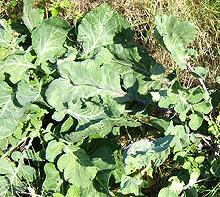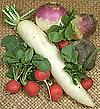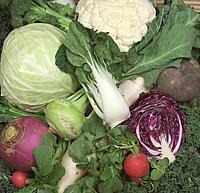
SAFARI
Users
 Wild cabbage, shown in the photo, is native to the coasts of western and
southern Europe. All our familiar Western cabbages, including cauliflower,
broccoli, kale and others, were developed from this wild plant by human
intervention. Asian "cabbages", in contrast, are mostly turnips, but
have been similarly breed into many varieties. The
Brassica Family
Tree explains the relationships. Photo by MPF
distributed under license Creative Commons
Attribution
Share-Alike v3.0.
Wild cabbage, shown in the photo, is native to the coasts of western and
southern Europe. All our familiar Western cabbages, including cauliflower,
broccoli, kale and others, were developed from this wild plant by human
intervention. Asian "cabbages", in contrast, are mostly turnips, but
have been similarly breed into many varieties. The
Brassica Family
Tree explains the relationships. Photo by MPF
distributed under license Creative Commons
Attribution
Share-Alike v3.0.
In China, even today, apartments with balconies are preferred so
there's a cool place to store a mound of cabbages for the winter. Koreans
bury huge jars in the ground in which to make chili laced sauerkraut
(kimchi) without which no meal would be complete. Germany wouldn't really
be Germany without sauerkraut, now would it? Where would the Slavic and
Nordic countries be without Cabbage, Turnips and Radishes? Probably
depopulated. In past times these vegetables meant the difference between
survival and not.
 Greens
Greens
Head & Loose Leaf Greens.
|
 Herbs
Herbs
Watercress Arugula, etc. |
 Flowers & Pods
Flowers & Pods
Broccoli, Cauliflower.
|
 Roots
Roots
Radishes, Turnips, etc. |
 Pickles & Preserves
Pickles & Preserves
Sauerkraut, Kimchi, etc. |
 Seeds & Oils
Seeds & Oils
|
 Brassica Family Tree
Brassica Family Tree
|
 Other Brassicales
Other Brassicales
Capers, Nasturtiums, Drumsticks, Papayas, etc. |




